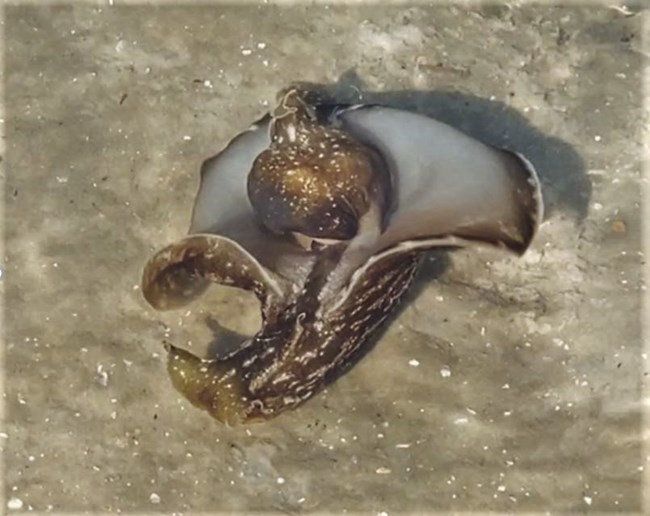
NPS Photo Sea hares are not afraid of people, they contain no ability to bite or sting, and their skin is not poisonous to humans. However, the skin does secret a toxin that helps it avoid being eaten by predators. Because of that toxin in their skin and in their ink, you should be vigilant that your dog doesn't lick or eat a sea hare. You should also rinse your hands after handling one before touching your eyes or mouth. Do not be deterred though. Sea hares are virtually harmless to humans and make an ideal snorkeling mate. As always it is important to respect wildlife in its natural habitat, and not harass them, but swimming alongside one does it little harm. They are often found on the beach as the tide moves out and can become stranded. If you place one back in the water it just might save its life, but remember they are very squishy and slimy so be gentle with them and rinse your hands thoroughly! Sea hares come in many colors and sizes. Scientists believe that the color of a sea hare is determined by the seaweed it eats. Our local sea hare is a Sooty, and feeds on the brownish and greenish aquatic plants found on oyster beds and near the shore. This gives them a brownish- greenish coloring with brown rings and spots that help it to blend with the muddy bottom of the Matanzas Inlet. Also determined by their diet is the color of their ink. Here at Matanzas the sea hare’s ink is a bright purple. This ink is so potent that it can stain clothing and boat seats so handle with care! Scientists who study the sea hare have determined the ink has a blocking agent that makes a would-be predator's nose stuffed so they cannot smell them, and therefore cannot catch them. Anemones, crabs, lobsters and starfish are all natural predators of the sea hare. However, due to pollution in coastal waters, more are dying from toxic algae blooms in recent years. So remember, if you come across a stranded sea hare, it can't hurt you, but you can possibly help it. |
Last updated: June 8, 2020
